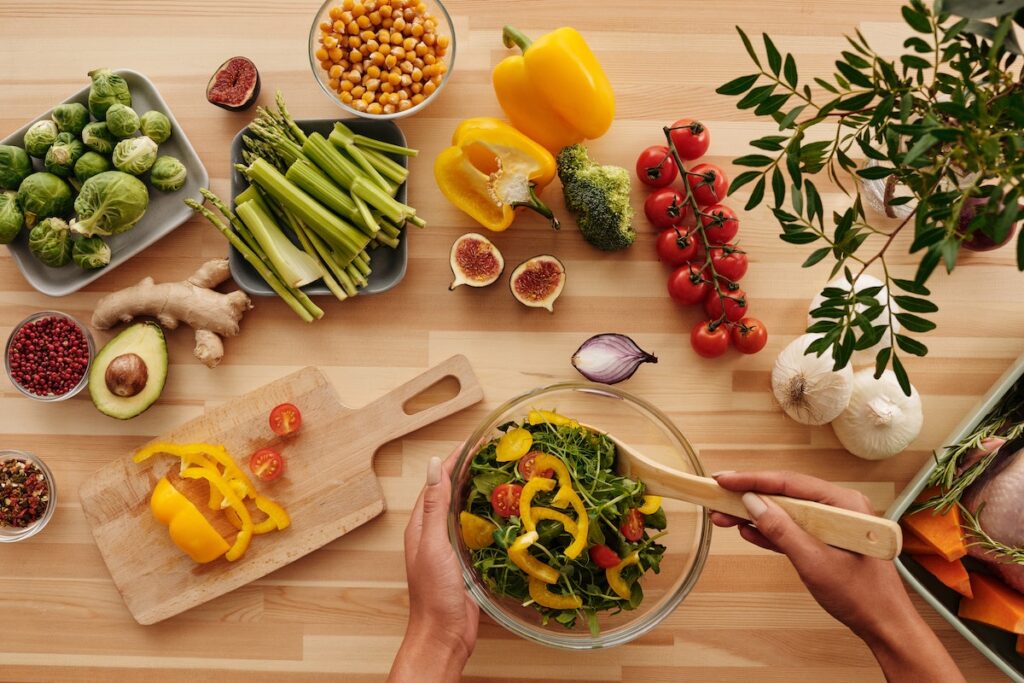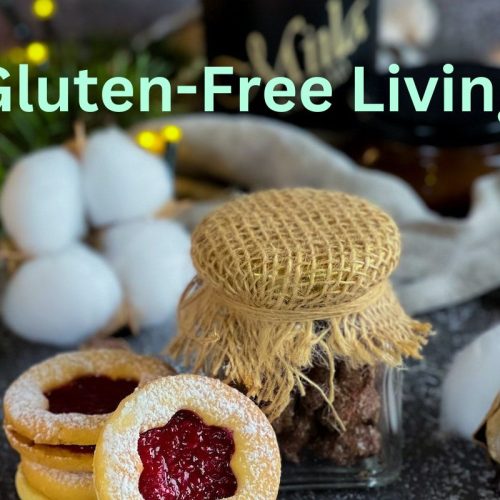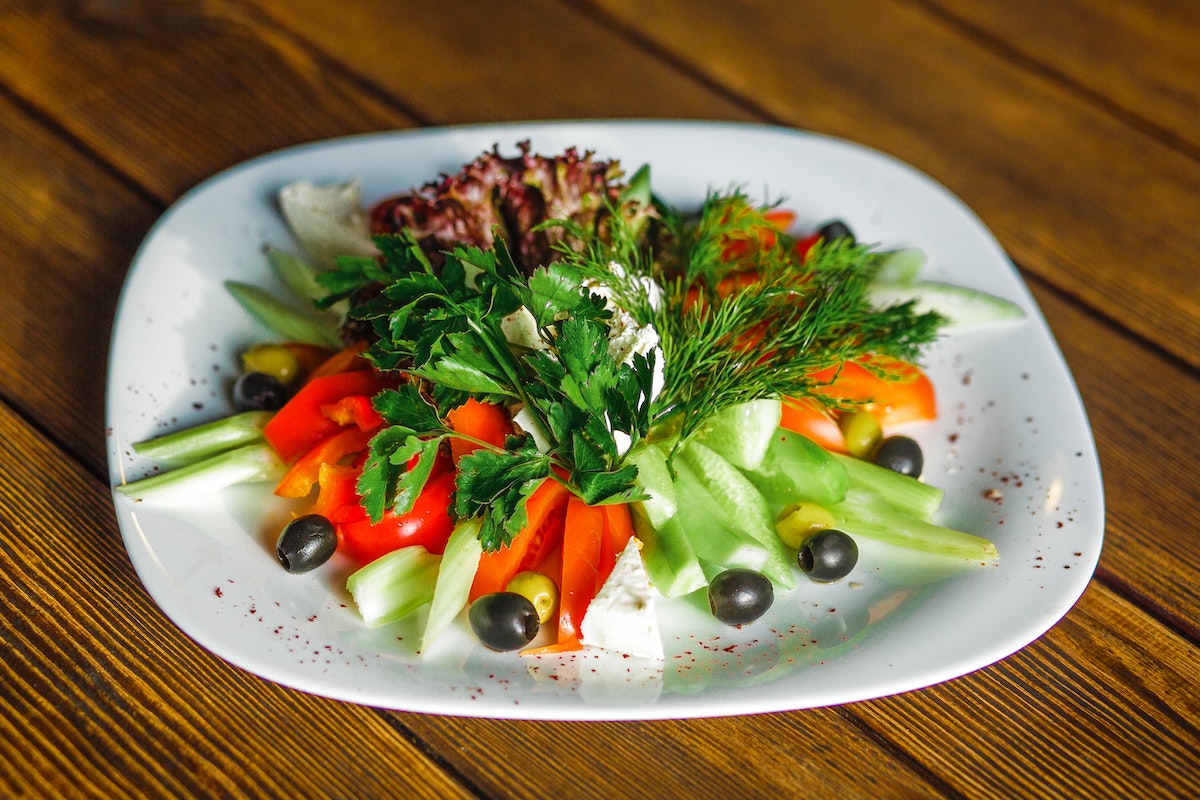Salads have long been revered as the epitome of health and wholesome eating. Adorned with their vibrant colors and a tantalizing array of ingredients, they undeniably present an enticing choice for a nourishing meal. However, it’s time to delve beyond the surface and uncover the truth about salads. In this enlightening article, we embark on a journey to demystify the salad narrative, unraveling the intricate tapestry of their nutritional value, and unveiling their numerous health advantages, while also shedding light on the occasional pitfalls that might surprise you.
Many people load up their salads with high-fat toppings like cheese, bacon, croutons, and creamy dressings, which can significantly increase calorie intake. Additionally, iceberg lettuce, which is commonly used as a base for salads, lacks the nutrients found in darker leafy greens like spinach and kale.
It’s important to approach salads mindfully, opting for nutrient-dense greens and lighter toppings to ensure they remain a healthy option for your diet. So, next time you choose a salad, be cautious of what you add to it to avoid falling into the salad paradox.
The Hidden Dangers Of Salad Dressings
Salad dressings may seem like a healthy addition to your greens, but they can actually be detrimental to your diet. Discover the hidden dangers lurking in these supposedly nutritious toppings, and find out how they can sabotage your weight loss efforts.
It’s no secret that salads are often seen as a healthy choice when it comes to maintaining a nutritious diet. Packed with greens and fresh ingredients, they seem like the perfect option for those looking to shed a few pounds or simply stay in shape.
However, many people fail to realize that the dressing they choose can make all the difference. In this section, we’ll delve into the hidden dangers of salad dressings that can actually undermine your efforts to eat healthily.
High-Calorie Content And Unhealthy Fats:
- Creamy dressings, like ranch or Caesar, may taste delicious, but they often come with a high-calorie count. A single serving of ranch dressing can add over 300 calories to your otherwise healthy salad.
- Most dressings contain unhealthy fats, such as saturated fats and trans fats. These types of fats can raise your cholesterol levels and increase the risk of heart disease.
Excessive Sugar And Sodium Levels:
- Many salad dressings, especially the ones with a sweet profile like honey mustard or Thousand Island, are loaded with added sugars. These sugars can significantly increase your calorie intake and contribute to weight gain.
- Sodium is another culprit hidden in salad dressings. High levels of sodium can lead to water retention, bloating, and increased blood pressure. Always check the label for sodium content before pouring on the dressing.
Lack Of Transparency In Labeling:
- Salad dressings often lack transparency when it comes to their ingredients. Some manufacturers utilize misleading labels that claim the dressing is “light” or “low-fat,” but fail to mention the excessive sugar or sodium levels present.
- Ingredients such as artificial flavors, preservatives, and additives may also be hidden in salad dressings, contributing to health concerns such as allergic reactions or chemical sensitivities.
In Summary:
Salad dressings can be a sneaky source of hidden health hazards. Watch out for high-calorie content and unhealthy fats, excessive sugar and sodium levels, as well as the lack of transparency in labeling. Opting for healthier alternatives, such as vinaigrettes made from olive oil and vinegar, can help you enjoy the benefits of salads without compromising your diet.
Stay vigilant and read the labels carefully to make informed choices for a healthier salad experience.
Impact Of Raw Vegetables On Digestion
Raw vegetables may seem like a healthy choice, but they can actually pose challenges to digestion. The high fiber content can lead to bloating and gas, making it important to balance your salad intake with cooked foods and other nutrients.
Difficulty In Digesting Raw Vegetables
- Raw vegetables can often be challenging for the digestive system to break down, causing discomfort and potential digestive issues.
- The high fiber content in raw vegetables can be difficult for some individuals to digest properly.
Lower Nutrient Absorption Due To Cellulose Content
- Cellulose, a compound found in the cell walls of plants, is abundant in raw vegetables and can impede the absorption of nutrients.
- As the human body lacks the enzyme necessary to break down cellulose, the nutrients present in raw vegetables may not be fully utilized.
Potential For Bloating And Gas
- Raw vegetables have a higher likelihood of causing bloating and excessive gas in some individuals.
- The complex carbohydrates and fibers found in raw vegetables can ferment in the gut, leading to uncomfortable symptoms.
With the potential challenges raw vegetables pose to digestion, it’s essential to take specific measures to optimize nutrient absorption and prevent discomfort.
Balancing Your Salad For Optimal Nutrition

Discover the Salad Paradox and unlock the secrets to balancing your salad for optimal nutrition. Explore how healthy greens can sometimes be harmful to your diet and learn practical tips for creating a well-rounded, nutrient-rich salad. Say goodbye to boring salads and hello to a healthier you!
If you’re trying to eat healthily, incorporating salads into your diet is a common practice. However, it’s crucial to strike a balance and ensure that your salad is truly nourishing for your body. In this section, we will explore how you can achieve optimal nutrition by choosing nutrient-dense greens and toppings, incorporating protein and healthy fats, and adding variety to avoid nutrient deficiencies.
Choosing Nutrient-Dense Greens And Toppings:
- Leafy greens: Opt for dark, leafy greens like spinach, kale, and arugula, as they are packed with essential vitamins and minerals.
- Cruciferous vegetables: Include vegetables like broccoli, cauliflower, and Brussels sprouts to provide your body with additional nutrients.
- Colorful vegetables: Add a spectrum of colors to your salad by including carrots, bell peppers, tomatoes, and cucumbers. These vegetables offer a variety of vitamins and antioxidants.
- Fresh herbs: Enhance the flavor and nutritional value of your salad by adding herbs like basil, cilantro, and parsley.
- Nutritious toppings: Choose toppings such as nuts, seeds, and dried fruits to provide a healthy crunch and extra nutrients. Opt for options like almonds, pumpkin seeds, and raisins.
Incorporating Protein And Healthy Fats:
- Lean protein sources: Include grilled chicken, turkey, tofu, or hard-boiled eggs to boost the protein content of your salad.
- Plant-based protein: If you’re vegetarian or vegan, consider incorporating protein-rich foods like chickpeas, lentils, quinoa, or edamame.
- Healthy fats: Add avocado slices, olive oil, or a sprinkle of flaxseed to provide your body with essential omega-3 fatty acids.
Adding Variety To Avoid Nutrient Deficiencies:

- Explore different greens: Rather than sticking to a single type of lettuce, experiment with a mix of romaine, iceberg, or butterhead lettuce for a diverse nutrient profile.
- Swap proteins: Rotate your protein sources to include a variety of meats, plant-based options, or seafood like salmon or shrimp.
- Try new toppings: Discover new toppings such as sunflower seeds, goji berries, or cranberries to diversify the nutrients in your salad.
- Seasonal fruits: Incorporating seasonal fruits like berries, oranges, or pomegranates can provide additional antioxidants and refresh your salad.
- Whole grains: For added fiber and nutrients, consider adding cooked quinoa, farro, or brown rice as a base or topping.
By balancing your salad with nutrient-dense greens and toppings, incorporating protein and healthy fats, and adding variety to avoid nutrient deficiencies, you can ensure that your salad is not only delicious but also a valuable part of your well-rounded diet.
So, get creative and enjoy your wholesome salad creations!
Frequently Asked Questions For The Salad Paradox: How Healthy Greens Can Be Harmful To Your Diet
What Are The Side Effects Of The Plant Paradox Diet?
The Plant Paradox diet may cause digestive issues, nutrient deficiencies, and potential difficulty in adhering to the diet.
What 3 Foods Did Dr. Gundry Eliminate From His Diet?
Dr. Gundry eliminated three foods from his diet: grains, legumes, and nightshade vegetables.
What Vegetables Does Dr. Gundry Say To Avoid?
Dr. Gundry advises against eating a specific vegetable.
Is The Plant Paradox Legit?
Yes, The Plant Paradox is a legitimate program with evidence-based research supporting its principles.
Conclusion
Salads are often seen as the epitome of health-conscious eating, but it turns out that they can be a double-edged sword when it comes to maintaining a balanced diet. While packed with vitamins, minerals, and fiber, salads can also be loaded with hidden calories and unhealthy additives.
By relying too heavily on salads as a go-to meal option, we may unknowingly sabotage our weight loss efforts and overall well-being. To avoid falling into the salad paradox, it’s crucial to approach salad preparation with mindfulness. Opt for nutrient-dense, low-calorie ingredients like leafy greens, colorful vegetables, lean proteins, and heart-healthy fats.
Be cautious of dressings, croutons, cheese, and other calorie-dense toppings that can quickly turn a healthy salad into a calorie bomb. Remember, healthy eating is about balance and variety. Incorporate other wholesome meals and snacks into your diet to ensure you’re getting all the essential nutrients your body needs.
Listen to your body’s cues and make choices that align with your individual health goals. By practicing moderation and making informed choices, you can enjoy the benefits of salads without falling into the trap of the salad paradox.






